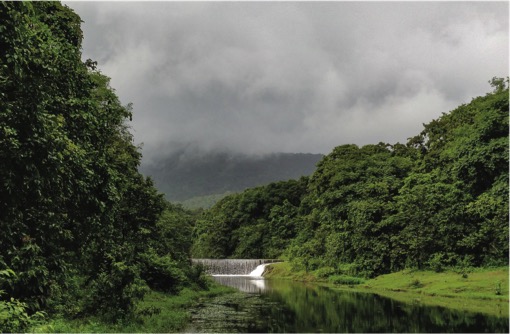For the past nine months, the people of Goa, in addition to the pandemic, have another pandemic to face – that of development. The government has cleared the three infrastructure projects which will cut through protected areas in the Western Ghats of Goa.
MONICA FERNANDES
My ancestors do not hail from Saligao, Bardez, Goa. My father was from Porvorim, a village nearby but unfortunately the family house was taken over permanently by the caretaker. The parents
of my late husband, Nelson, both were from Saligao. Nelson’s ancestral house was bang on the main road. We would frequent Saligao with his parents and our two kids, Aloke and Minal, during the holidays for several years.
The kids were very happy to come to Goa. Nelson would drive us to the beaches where we would feast leisurely on delicious Goan curries after splashing around in the sea for a while. The children thought that it was adventurous to live in a village that had no electricity and where water had to be drawn from a well.
But what we loved most was going up the hill which was just behind our house. The hill was interspersed with vegetation, mainly cashew plants. We looked forward to the trek upright to the spring near the top of the hill. A pipe
from the spring had been installed and a make shift cement partition had been constructed by some good soul below the place where the pipe ended so that people could bathe. There was a partition for ladies and gents so all could bathe in what was known as the ‘fountain’. A stopper had been placed at the end of the pipe, which the bathers put back when they were leaving to stop the flow of the precious mineral laden water.
My soft-spoken father-in-law Pascoal whom we affectionately called Papa, told us that the hills were on government land and that the greenery and fountain would always be there. He was so wrong!
There came a time when Nelson, the kids and myself got bored of the novelty of village life and started holidaying elsewhere. My mother-in-law, Prudence, then took it upon herself to go to Goa to maintain the village home which she too loved. As age and illness got the better of her, she had to stop visiting Goa. It was now up to Nelson and me to maintain the house. I regret to say that we failed miserably. “Who is going to chase those lazy, sussegado Goans to get our work done? It is much easier to use our hard earned money and book a hotel for our vacations.” So the ancestral house in Molembhat, Saligao was allowed to fall to ruin.
Nelson was diagnosed with Multiple Myeloma (bone marrow cancer) in January 2012. He started longing for his childhood holiday home. We engaged a very competent architect, Arminio Ribeiro, to renovate the house.
We were sorely disappointed to learn
from him that the fountain was alas no more. Hutments had come up on the entire hill. To add insult to injury, wily local politicians had even permitted the construction of a nightclub. The indiscriminate felling of trees in order to build huts will lead in time to landslides.
And that, my friends, is the tragedy of Goa. Ancestral homes are being neglected as future generations seek their fortunes in the big cities and many go abroad. The local people are content with their own homes and gardens. And the hillsides are green no more.
As for the road where the house is located,
it is a nightmare. Vehicles come hurtling down the hill from the nearing village of Sangolda. These cars are chock full of raucous crowds of merry makers who are more intent on fun than on keeping Goa clean. It is more difficult to cross this road than the road where I live in Mumbai!
I have only touched on a small portion of
a Goan village. But Goa in general is in danger of losing its greenery, its clean air, its peaceful ambience in the parts less touched by so called ‘development’.
For the past nine months, the people of
Goa, in addition to the pandemic, have another pandemic to face – that of development. The government has cleared the three infrastructure projects which will cut through protected areas in the Western Ghats of Goa viz. the double tracking of railway lines, widening of the NH4A highway and the laying of a 400-KV power transmission line. These will pass through the
Bhagwan Mahaveer Wildlife Sanctuary and the Mollem National Park. This will result in the felling of 59,000 trees around the sanctuary and the national park. There are fears of serious pollution issues caused by coal handling and the future of these biodiversity hotspots are in danger.
I understand that this coal is to be imported from Japan and will be used primarily for industries in Maharashtra and Karnataka. So it is only logical that a large part of this coal should be imported to the States that will benefit the most.
But this time sussegado Goans are waking up. On November 1, more than 5,000 Goans gathered by the railway tracks at Chandor to observe a peaceful protest from 10 in the night to 5 in the morning. Goans all over have signed petitions in protest. Better late than never!
∎